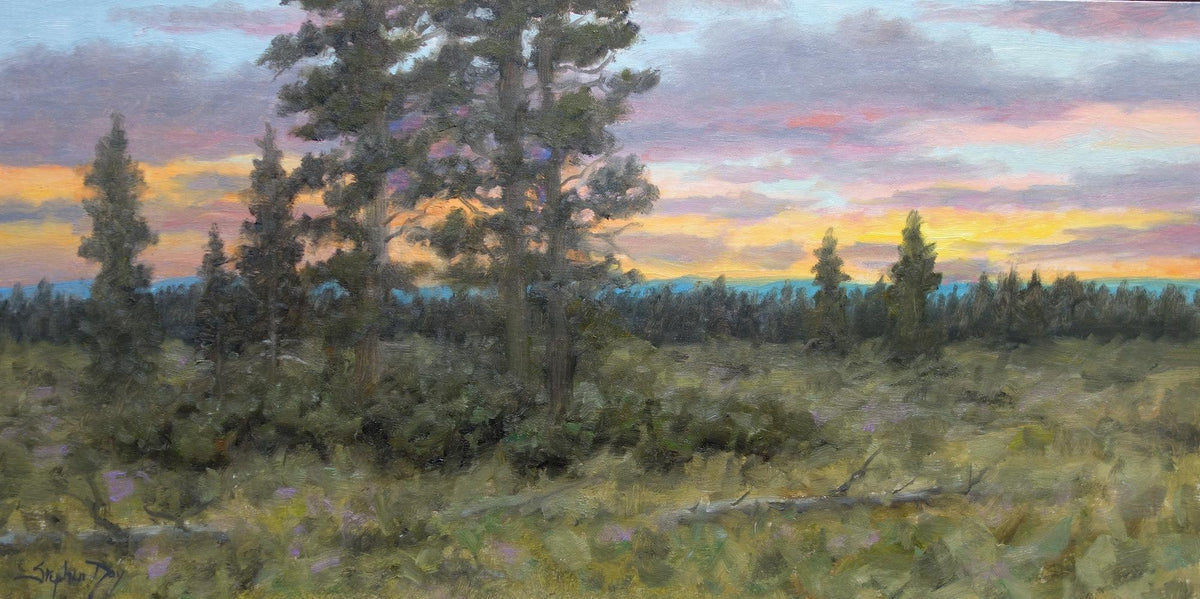
Plein Air Painting - A Loyally Following. Then and Now.
|
Time to read 3 min
|
Time to read 3 min
Artists have long painted outdoors, but in France during the mid-19th century, working in natural light became more popular and particularly important to various schools and movements. With this interest and support, Plein Air painting began to gather its first loyal followers. Plein Air painting is a French expression meaning “in the open air,” and refers to the act of painting outdoors. The term described artists such as Claude Monet, Pierre-Auguste Renoir, and Edgar Degas, who began creating their work outdoors. Since then, the term plein air has been used to describe people who paint outside. Using an outdoor easel, paints, and brushes, plein air artists strive to capture the spirit and essence of a landscape or subject before them.
Monet, seen as a founder of French Impressionist painting, is known for his love of working outdoors, surrounded by gardens and everchanging, natural light. Monet's friends and contemporaries even painted him painting in plein air, as can be seen in this piece by John Singer Sargent, known as the greatest society portraitist of his day.
Here in the United States, Winslow Homer is considered one of the foremost painters in 19th-century America and a preeminent figure in American art. He often painted outdoors, in plein air, while taking working vacations throughout New England.
Plein air painting continues to captivate us with its energy and vibrance. Shifting light or a change in climate means every aspect of a scene is constantly changing. Simplification, stylization, and quick decision-making must be learned and employed to create a successful outdoor painting. This reactionary style of painting distills the imagery, infusing it with an energy and sense of spontaneity, not always seen in works created and finished in a studio setting. Many artists view plein air painting as a “natural classroom,” where one becomes skilled at depicting color and atmosphere, rapidly and accurately.
Plein air artists are committed to painting from life, regardless of the challenges (heat, cold, rain, snow). This dedication allows collectors and art lovers the ongoing opportunity to enjoy this vibrant and dynamic style of painting. Peggy Immel and Stephen Day, two of Sorrel Sky Gallery's plein air artists shared what draws them to this reactionary style of painting.
Peggy Immel has been focusing on color relationships over the years, and how they change the mood or feeling of a painting as she shifts her palette from cooler to warmer. At times, she introduces more man-made objects, perhaps a road, a fence line, a small structure, or a village, to preserve the human influence and keep her paintings engaging, for herself and others. Believing in the need to be prepared to be spontaneous, she prefers to plan before embarking on a new plein air endeavor.
“I’ll walk a site that attracts me, writing down my ideas, my reason to paint what I see. Later, I’ll make a small value sketch. Finally, I set all of that aside and just paint intuitively. This process allows for an easier flow of creativity.”
Stephen Day often revisits his childhood memories of the big skies and wide open spaces of Wyoming, either literally or inwardly, to nourish his artistic vision. Painting almost exclusively from life, or in plein air, he strives to capture the feeling and the mood of the subject before him. With the goal of refining his paintings, he will work on a piece for a time, set it aside, and work on something else. Later, he’ll return to the original piece, developing and enhancing the final imagery.
“I paint every day, pretty loose and quickly to get a spontaneous and fresh response. Landscapes, skies, and seasonal scenes, inspired by the Southwest. But part of my heart will always be in Wyoming. You always have a special place for where you were from.”


